‘Frameworks’ is a thinking tool: a way, a methodology, and a mechanism, for modelling thinking and understanding, and for the visualisation of thinking in the form of simple graphical models.
‘Frameworks’: is a Prototype. It is simple, minimal and easy to use. It is based on a simple theory of information and information modelling. It is an elegantly simple methodology for structured thinking and for the modelling and understanding of complexity. Through simple analysis, structural decomposition, and the discerning, naming and categorisation of things, it provides for the step-by-step construction of simple graphical models as graphical trees made up of nodes and links of association. High-level meaningful models reduced to the fewest key elements as browsers; models as interfaces to thinking and understanding and for communication and sharing.
On paper – it is as easy as sketching ideas on the back of an envelope, on a napkin, in a notebook. As a computer-based, web-based, mechanism – it is small, simple, easy to use with a minimal learning curve, and it provides a simple metamodel for a framed and constrained step-by-step construction of models of thinking and understanding in the form of simple graphical depictions around a simple object-oriented spinal model of Focus and Context, and Instance, where Context is the determinant of meaning.
‘Frameworks’ is problem-led and addresses the needs identified for ordinary people and with a focus on children – as they are confronted with information chaos, information anarchy, disinformation, and opinion masquerading as truth. A wealth of stuff which is created by others and really flawed.
We are swamped and overwhelmed in the Digital World; effectively gadget-led and consumers of digital stuff, becoming targets, becoming corralled and trapped in bubbles of belief and opinion. So many of us demanding instant gratification, entertainment, the best deals, satisfied with headlines. Many of us are frustrated and alienated by big software and the wealth of sophisticated tools enjoyed by tech-savvy professionals; wanting and needing to engage in the world of informatics with the simplest of tools.
Daniel Levitin in his Book, “The Organised Mind; Thinking Straight in the Age of Information Overload” Penguin Books, 2015 highlighted that “It is crucial that each of us takes the responsibility for verifying the information we encounter, testing it and evaluating it – this is the skill we must teach the next generation of the citizens of the world, the capability to think clearly, completely, critically and creatively”.
‘Frameworks’ provides a way to address the need for independent, structured thinking – strategies for thinking straight and for clarity, strategies for reducing scale and complexity, and for the organisation and communication of key information.
The next generation of children need to be educated about “the 21st Century digital world of big information” – beyond skills and engagement with gadgets like smartphones and tablets; educated about “information”, “informatics”, about thinking and communication; hitting the ground running with capabilities and skills in structured thinking, and to visualise, communicate and share ‘big pictures’- high-level views capturing the essence – models as interfaces to their thinking.
Children working with teachers. A good place to start. Independent thinking, working in small teams, discussing and sharing their thinking and understanding, reaching consensus and evolving better models.
The greater context for ‘Frameworks’ is representation, communication and sharing of thinking and understanding, views and perspectives.
My guiding principle has been People First! Gadgets Subsidiary! People-centred computing. The development of Human Intelligence & Intellect, Human Learning & Thinking and strategies for dealing with change and disruption.
My work is concerned with object-oriented information modelling – building working prototypes of ideas, theories and designs for what people call ‘Tools”. Tools for information modelling. Tools which are simple, easy-to-use, and useful. Tools which are essentially visual. Interactive, creative, enjoyable, stimulating, fun. Positively cognitively stimulating. Promoting and providing for structured thinking; for clarity in simple visualisation; a good and evolving understanding, and good communication.
Ideas around ‘Frameworks’ originate in the pioneering work of such as Engelbart, Kay, Piaget, Papert, Bruner and Shneiderman – the counterculture “personal computing” of the 1970s and computing machines organised into networks for the development of the human intellect – constructivism and constructionism in learning – the object-oriented paradigm – and the graphical user interface enabling direct manipulation of objects by “users”. The technical view of “users” is replaced with the ‘Frameworks’ view of ‘Thinkers becoming Modellers’.
‘Frameworks’ has been discussed and reviewed by a creative thinkers and practitioners in a variety of domains including neuroscience, communication, computing science, education, design and psychotherapy.
Focused on Foundational Education: children need to understand complexity as soon as possible and ‘Frameworks’ provides a way and a mechanism to achieve this. Children in a class and in groups working with teachers. Children becoming aware and thinking about complexity in a world where scale and complexity in systems and domains must be reduced to manageable proportions and to hit the ground running with literacies in the domains of information and informatics, and capabilities and skills in simple analysis, modelling, communication and sharing. A good place to start: a simple methodology for modelling thinking with pen and paper. Followed by the employment of a simple tool – and interactive online internet experience – for the construction, elaboration and evolution of simple graphical information models.
In the design domain, ‘Frameworks’ provides for the articulation of ideas within a bounded and constrained space; for the collaborative evolution of ideas helping to define the focus and then the context of an exercise; as a visual and spatial method, ‘Frameworks’ brings a different perspective to design, and could be used alongside other methodologies such as Design Thinking or Systems Thinking.
The ‘Frameworks’ Project aims to situate ‘Frameworks’ in the Age of Big Information – besides and beyond Big Data – and to enable ordinary people to become engaged in the simple creative computing: the creation by individuals of models of their independent thinking; to prototype, test, and evaluate the tool: “Intelligent Frame”; to disseminate the methodology by representing it and debating it with creative thinkers and practitioners. Working with professionals and students in various collaborations, I aim to situate ‘Frameworks’ in test beds in order to secure evidence and traction for its continuing evolution.
‘Frameworks’ in 15 Pictures
See Image 1: Dissemination
The Book
The Book is a Primer and Manual for Primary Teachers and their Children. Setting out the premise, the thesis, the ideas around ‘Frameworks’, its genesis and the methodology.
See Image 2: Linking to the Digital World
The ‘Frameworks’ Button
The ‘Frameworks’ Browser Button – hyperlinking to an online web-based ‘Frameworks’ Browser – with video animations, and the interactive web-based tool: “The Intelligent Frame”, and online web-based Resources.
See Image 3: Thinking
The Thinker (Rodin)
The Thinker – originally called ‘The Poet’ – is a bronze sculpture by Auguste Rodin – depicting a pensive nude male figure of heroic size sitting on a rock. He is seen leaning over, his right elbow placed on his left thigh, holding the weight of his chin on the back of his right hand – said to be at the Gates of Hell, contemplating the fate of the damned.
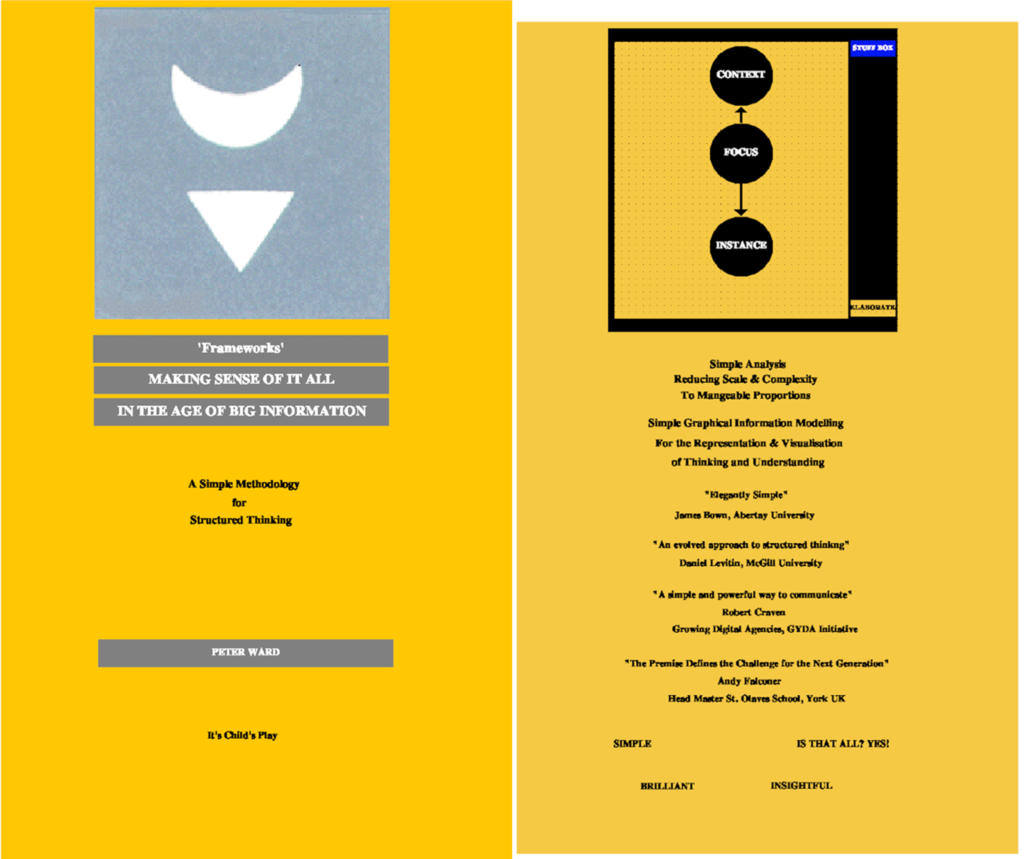
Image 1: The Book

Image 2: The Frameworks Button

Image 3: Thinking; which is certainly what human beings are capable of.
‘Frameworks’ is a Thinking Tool; a way for structured thinking.
Conventionally, information technology “allows .. users to…”. In contrast to this technical, gadget-first view, ‘Frameworks’ is essentially thinking-led – people first, gadgets subsidiary. Both a methodology and a tool, ‘Frameworks’ enables Thinker Modellers.
See Image 4: Thinking
In the Age of Big Information in the Digital World
See Image 5: Simple Graphical Models of Thinking
Can you get your head around 41 Objects arranged around a Core Spinal Model and 5 Levels of Hierarchy?
See Image 6: ‘Frameworks’ IMPFW Prototype
This ‘Frameworks’ Prototype is ‘IMPFW’, 1999. It was based on previous information modelling prototypes.
The interface is visual and it is small; with a small menu providing simply for the construction of a model (automated), and for the loading and editing of a model.
In the IMPFW prototype, Modelling is based on a Core Spinal Model of Focus and Context, and Instance. The Elaboration of Models is automated within a simple framework.
The aim of the IMPFW prototype was to provide the individual with a simple automated construction experience and a quick and simple process.
‘Frameworks’ has evolved from earlier prototypes to be (to remain) simple: simple to comprehend and simple to apprehend. Simple to understand, simple to pick up and use. ‘Frameworks’ is thinking tool. It is simple and small.
In ‘Frameworks’, the modelling is contained in a Frame and the Elaboration is Constrained according to a discipline and according to rules e.g. Novice, Entry-Level: the information model based on elaboration around a simple graphical object-oriented metamodel (focus and context, and instance).
See Images 7 and 8: ‘Frameworks’ Methodology Metaphor – Thinker Modeller, Canvas and Palette
See Image 9: The Essence of ‘Frameworks’
See Image 10: ‘Frameworks’ Meta Model

Image 4: Big Information in the Digital World
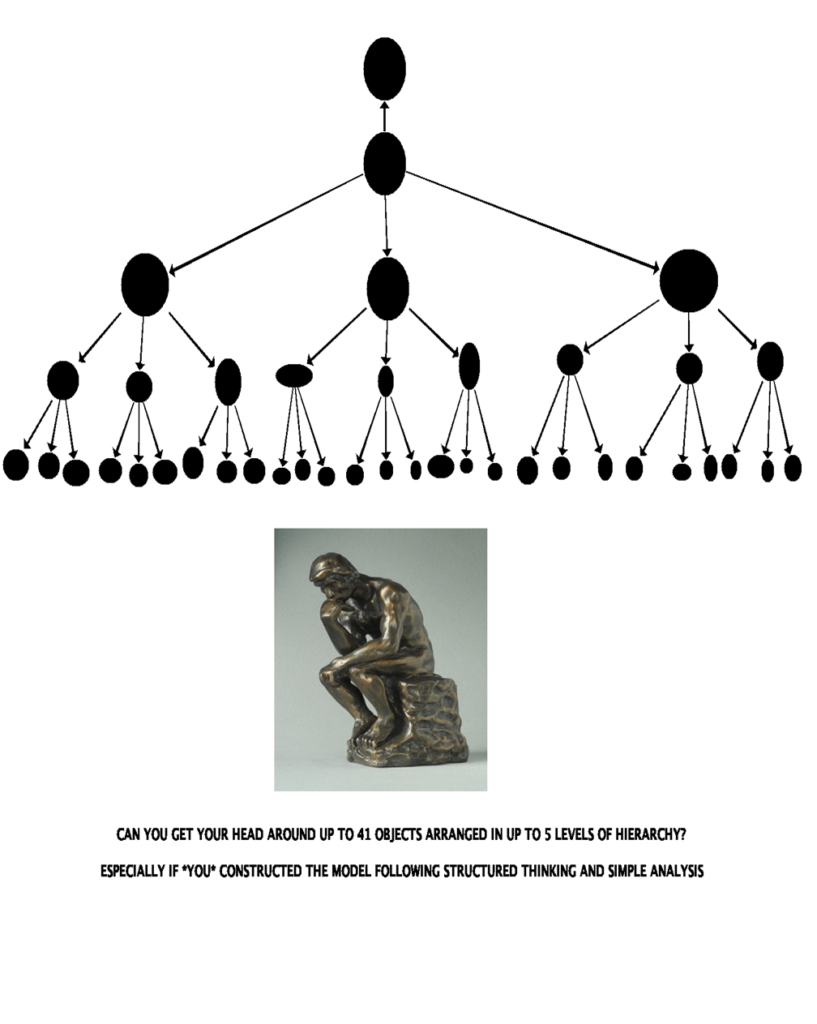
Image 5: Simple Graphical Models of Thinking

Image 6: ‘Frameworks’ IMPFW Prototype

Image 7: Thinker Modeller, Canvas

Image 8: Thinker Modeller, Canvas and Palette
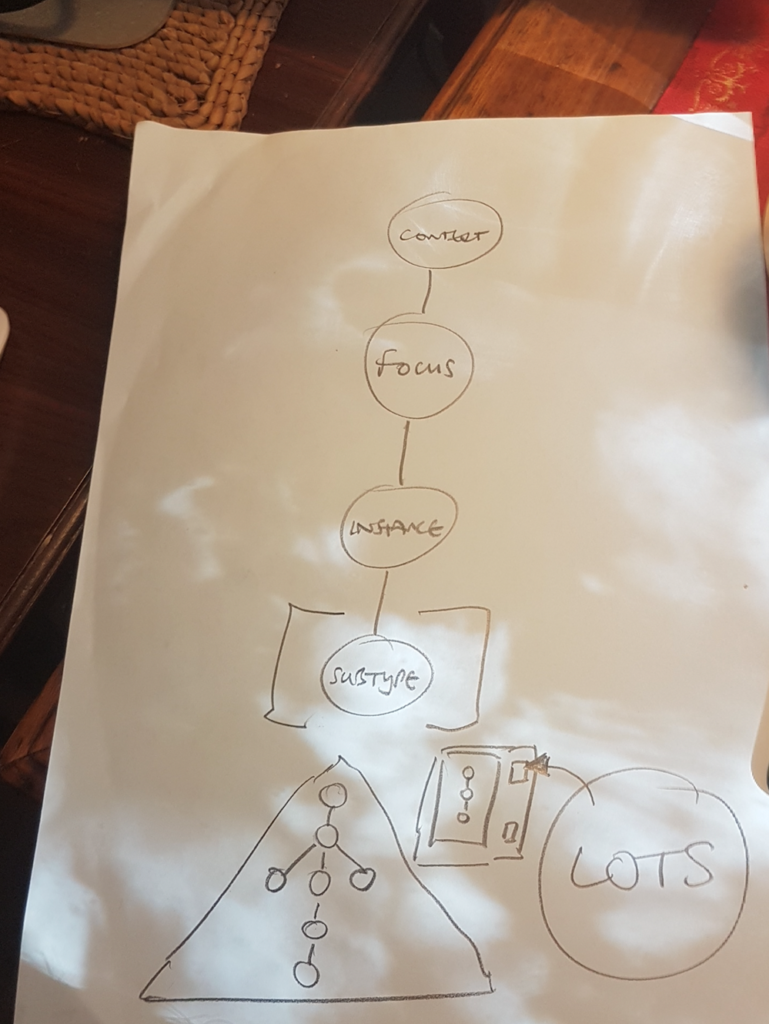
Image 9: The Essence of ‘Frameworks’

Image 10: The Frameworks Meta Model
For the construction of models of thinking – framed – thinking and modelling contained within the Thinking and Modelling Space – the thinking model constructed around a simple Core Spinal Model of Focus and Context, and Instance. The Frame with the integral Stuff Box as the bridge, the sandbox and the Elaboration option – provided by ‘Frameworks’ (coming online) as the Thinker Modeller specifies the Focus and Context.
The Thinker Modeller is obliged to realise and specify the Context – which is the key determinant of meaning. One Focus: one Model. One Model may have a number and variety of Contexts.
The idea of the ‘Frameworks’ “Intelligent Frame” – is that the process of engagement and the construction of models of thinking and understanding is interactive and a realisation of structured thinking. The Methodology of framed and constrained modelling is provided as a rule-based process where the discipline of up to 41 Objects and up to 5 Levels of Hierarchy is imposed by the Object-Oriented “Intelligent Frame” (which knows the rules).
See Image 11: ‘Frameworks’ Novice Entry-Level Meta Model
This is the Novice Entry-Level Meta Model – where the Novice Thinker Modeller is learning about structured thinking and reducing scale and complexity to manageable proportions.
The Novice engages with the Entry-Level Meta Model and, beyond specifying the Focus and Context, Elaboration of a greater model – where subtypes and varieties of the Focus entity are included – the thinking model is constrained: to up to 41 Objects arranged in a model with up to 5 Levels of Hierarchy.
The idea is to teach children about “complexity”. To facilitate learning about strategies for dealing with complexity, how to reduce complexity to simpler manageable levels. In learning about complexity and learning about strategies and ways for reducing complexity, children will be exercising structured thinking and better thinking, and the visual modelling and communication of thinking.
See Image 12: ‘Frameworks, Framed & Constrained Modelling
The computer-based ‘Frameworks’ Second Working Prototype provides the Thinker Modeller with an “Intelligent Frame” – Frame, Thinking Space, Integral Stuff Box and Elaborate (option), and the Core Spinal Model. The Novice Tool provides Elaboration -further to Focus and Context – constrained up to a nominal 35 Objects in a nominal 7 x 5 Grid.
See Image 13: ‘Frameworks’, A Tool and an Interactive Tutorial (Interactive Step by Step Methodology)
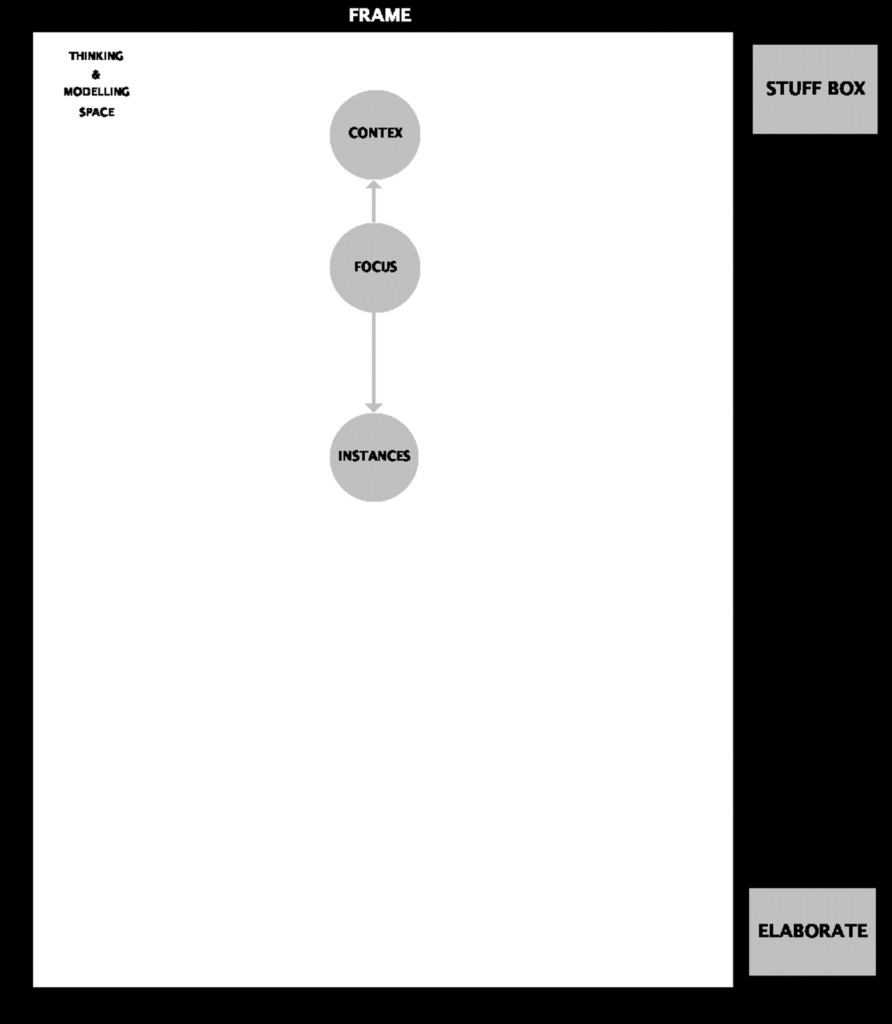
Image 11: The Novice Entry-Level Meta Model
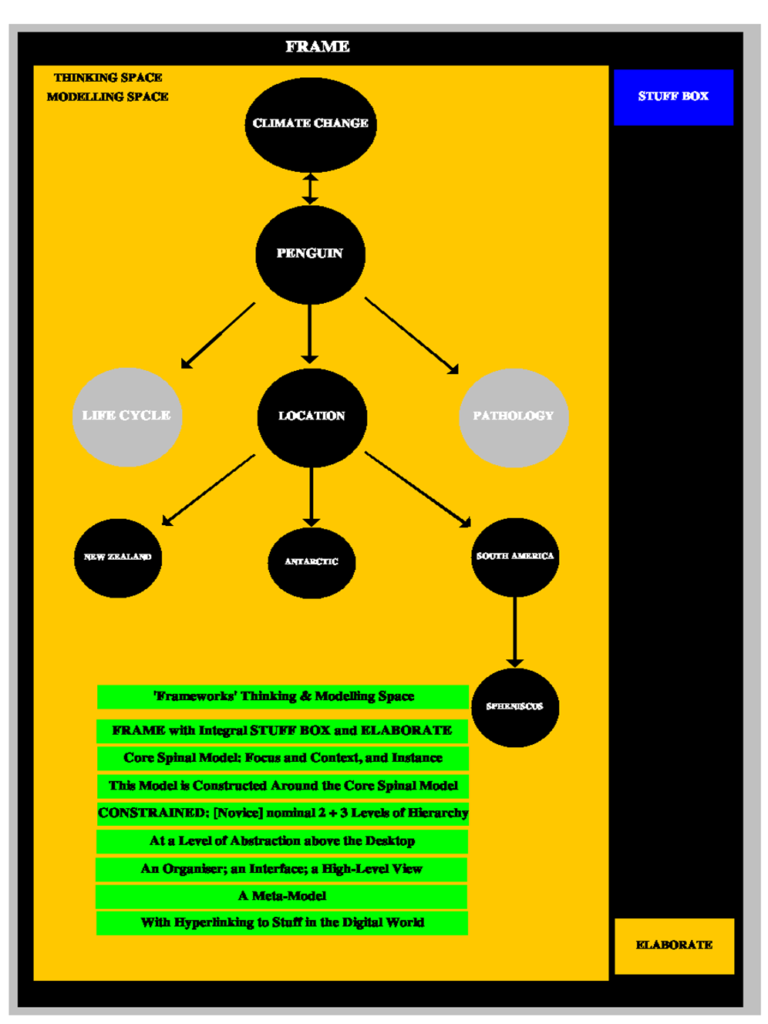
Image 12: Framed & Constrained Modelling
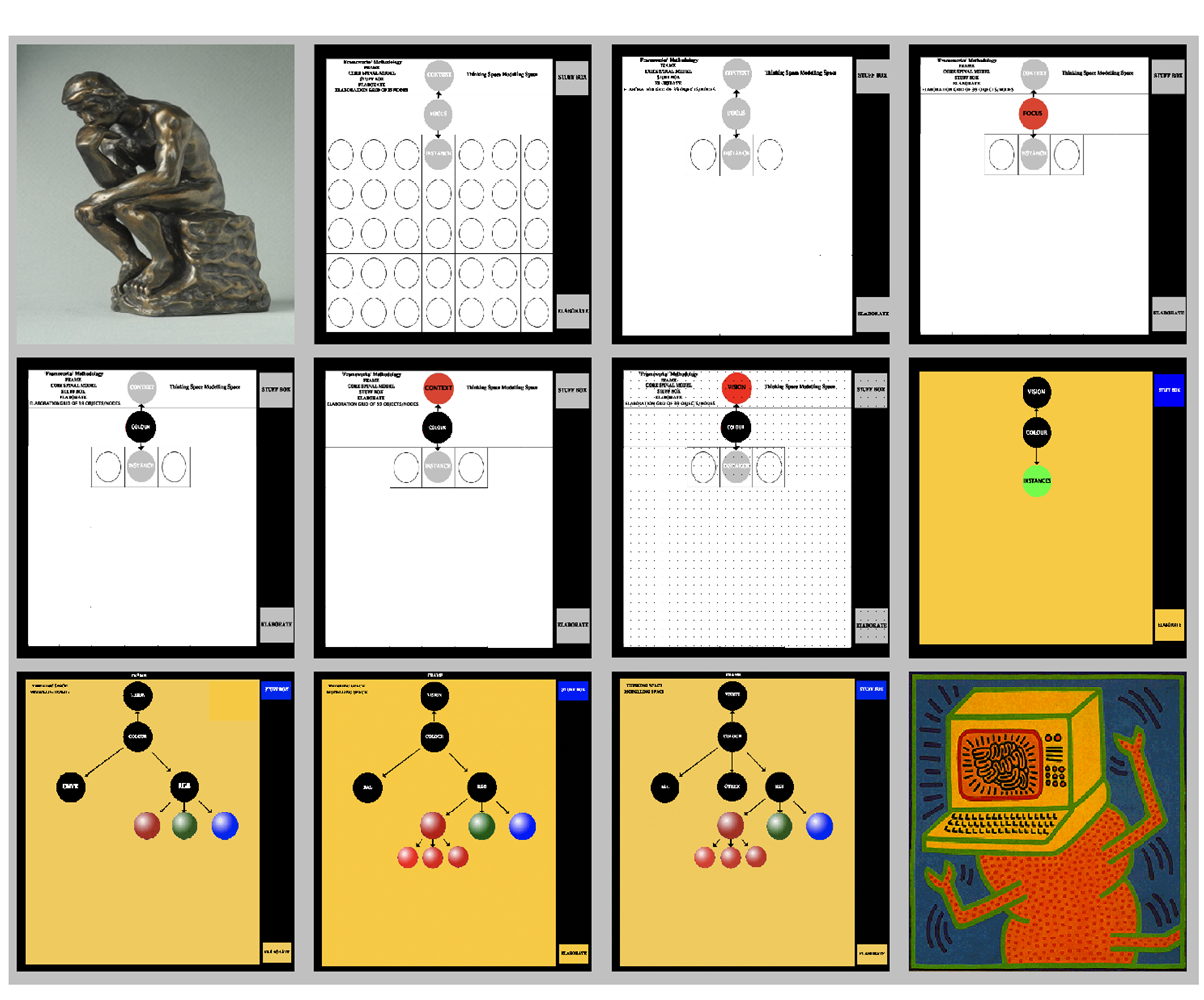
Image 13: Step-by-step Methodology
Information Modelling, the modelling of thinking: Framed and Constrained. The ‘Frameworks’ Meta Model: Frame with integrated Stuff Box and Elaboration (option); the Thinking & Modelling Space; the Core Spinal Model.
The Thinker engages with ‘Frameworks’ (with the “Intelligent Frame”) and the interactive process of construction of information modelling construction.
Modelling is constrained for the Novice to 5 Levels of Hierarchy: Focus and Context, and up to 3 additional Levels, with the Rule of Three: up to 3 Objects (Nodes) at Level 3 (Instances, varieties, subtypes, subclasses) – decomposing into increasing granularity – at Level 4 (varieties, sub-subtypes, sub-subclasses), at Level 5 (varieties, sub-sub- subtypes, sub-sub-subclasses) each Node decomposing to up to 3 Objects each Node decomposing to up to 3 Objects, at Level 4 each Node decomposing to up to 3 Objects (41 Objects, including Focus and Context – with further Elaboration in a nominal grid 5 x 3 and up to 35 Objects.
See Image 14: ‘Frameworks’ First Prototype Evolving to Second Prototype
From First, Working, Prototype (‘JavaNED”) employed to develop, evolve and depict the Design for Second Prototype ‘Frameworks’ “Intelligent Frame”. The realisation of the Theoretical to the Tangible (and testable, to secure evidence). The ‘Frameworks’ Meta Model: Frame (with integral Stuff Box and Elaborate option), Thinking Space & Modelling Space, and Core Spinal Model Active. The ‘Frameworks’’ Methodology: Framed & Constrained – the Interactive Step-by-Step construction of models of thinking and understanding.
The simple object-oriented Core Spinal Model requires the Thinker Modeller to realise and name ‘Context’ – where Context is the determinant of meaning. In constructing a model of their thinking, the Thinker may have an Entity in mind – which they Name and then ‘Frameworks’ requires the Thinker to realise and to Name the Context. One Focus – one model; a given Focus may have a number of Contexts – which may give rise to a number of Models.
See Image 15: The Intelligent Frame

Image 14: depicting the evolution of the ‘Frameworks’ Methodology – employing the first prototype tool ‘JavaNED’.

Image 15: depicting the Current First Working Web-based Prototype Tool: “The Intelligent Frame”.
